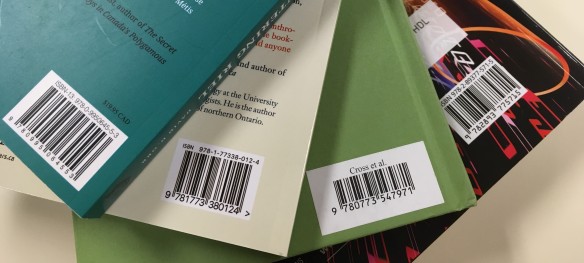Did you know that Library and Archives Canada (LAC) is the national agency responsible for issuing ISBNs (for English publications only) and ISMNs to Canadian publishers?
This week, LAC is honoured to host the annual general meetings for the International ISBN Agency and the International ISMN Agency, and to welcome delegates attending from national and regional agencies around the world. Work done by these international agencies to coordinate and supervise the world-wide use of the standards ensures that they meet the present and future needs of the publishing industry.
What is an ISBN?
ISBN stands for International Standard Book Number. Publishers, booksellers, and libraries have used them since the early 1970s to identify each unique edition of a publication. These numbers provide an unduplicated, internationally recognized identifier used in publisher inventories, online retail systems, and library catalogues. Each different format of a publication (e.g., hardcover, softcover, MOBI, EPUB, PDF) is assigned a separate ISBN, so that the correct format can be easily ordered or retrieved.
What is an ISMN?
ISMN stands for International Standard Music Number. Introduced in 1993 as a unique identifier for notated music, music publishers request ISMNs for scores and sheet music collections, including digital sheet music. They are not used for recorded music or books about music. A separate ISMN is assigned to each separately available format and component (e.g. full score, vocal score).
The elements of an ISBN/ISMN
Far from being a random number, the 13-digit number is composed of four or five meaningful elements providing valuable information about an item’s publishing location or language, publisher, and publisher’s size. For example, ISBN 978-0-660-05896-2 (a Government of Canada publication) breaks down as follows:
978: The prefix element, needed to create a 13-digit barcode, identifies the number as an ISBN. (The prefix element for ISMNs is 979-0.)
0: The registration group element identifies the country, region, or language area. English-speaking areas are 0 or 1. French-speaking areas are 2. (ISMNs do not use the group element, since music is international.)
660: The registrant element identifies a particular publisher. The number of digits in this element varies according to the size of a publisher’s expected output. Large publishers have short registrant elements, while small publishers have long ones.
05896: The publication element identifies a specific publication by a publisher. A long number indicates that a publisher has published (or expects to publish) many titles, while a short number indicates the opposite.
2: The check digit verifies that the previous digits are correct, and is calculated by an algorithm.
Canadian publishers or self-publishers should contact the ISBN and ISMN agencies at LAC to obtain the appropriate number of ISBNs or ISMNs needed for their publications.
Contact us
- Visit ISBN Canada or email bac.isbn.lac@canada.ca or use the ISBN Canada online system
- Visit ISMN Canada or email bac.ismn.lac@canada.ca
Please note that French language publishers must obtain their ISBNs from the Bibliothèque et Archives nationales du Québec.



